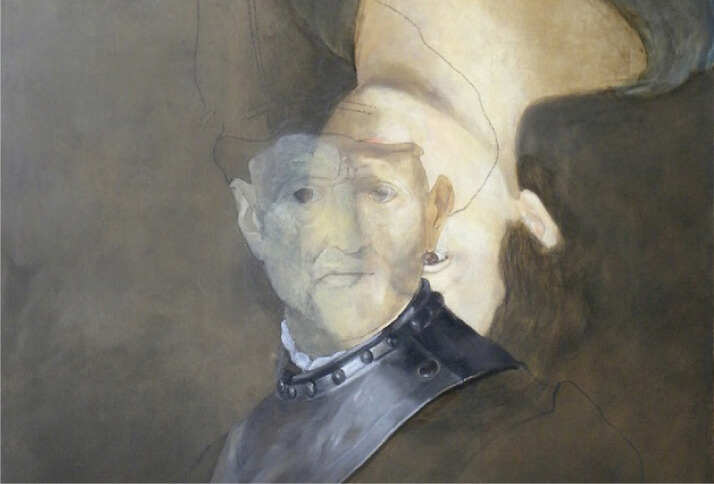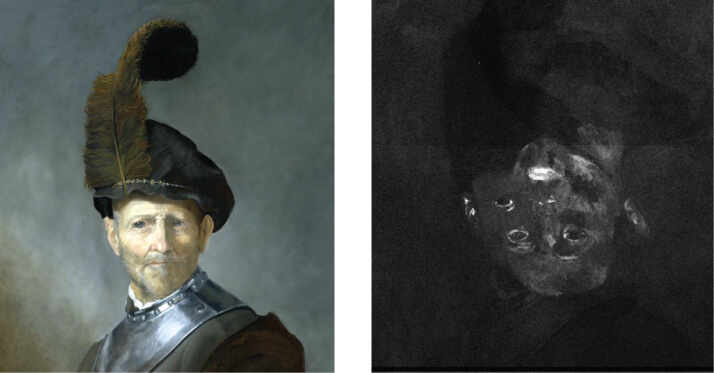
There is a hidden portrait underneath the surface of Rembrandt’s ‘An Old Man in Military Costume’, which is of high art-historical interest. All previous imaging attempts failed to reveal details. We assumed that it could be visualized by MA-XRF, but several possible combinations of source (synchrotron or X-ray tube) and detectors were discussed and it was not clear which instrument would be best suited to the investigation of the original painting.
A comparison of different instruments was not possible with the original painting; it would be irresponsible to expose a unique precious work of art to the stress of transporting it to multiple experiments. Therefore, we decided to create a mock-up, analyze it with the different instruments discussed, and make an informed decision based on the results obtained.
The creation of the mock-up was based on local, qualitative investigations of the original painting. So we assume the mock-up is accurate in terms of layering and qualitative (but not quantitative) paint composition. As well as allowing for a direct comparison of the imaging capabilities of each scanner, the mock-up also gave opportunities for logistical “dry runs.” We were able to identify potential hazards for the painting during transportation, mounting, and the experiment itself, and thus plan to minimize any stress the original painting might be exposed to in the “wet run”.

Conventional imagining techniques for historical paintings, such as X-ray radiography, Infrared reflectography and Neutron Activation Auto-Radiography, had revealed the presence of a hidden portrait but failed to visualize the details. But preliminary investigations also revealed that Vermilion (HgS) has been used nearly exclusively in the flesh tones of the lower painting, suggesting that element-specific imaging might successfully reveal the hidden portrait. Although MA-XRF is a recently established method, I believe it is best suited for the acquisition of surface and sub-surface elemental distribution images in historical paintings.
To my best knowledge, the creation of a complete mock-up, including sub-surface layers, had never before been attempted and required detailed studies of radiography and cross sections of the original painting. Furthermore, all instruments used in these experiments were of an experimental nature and assembled solely for these experiments – protocols for the acquisition and processing of data, as well as the presentation of the results, needed to be established.
We have shown that synchrotron-based scanners and improved mobile X-ray tube based scanners are capable of visualizing the hidden portrait in the mock-up. I believe that an investigation of the original painting will provide additional information on the hidden portrait, but we cannot ignore the fact that heavy re-working of the paint layers above the hidden portrait may make the elemental distribution images more difficult to read.
Matthias Alfeld works in Professor Koen Janssens group at the University of Antwerp, Belgium. For more information, see: “Revealing hidden paint layers in oil paintings by means of scanning macro-XRF: a mock-up study based on Rembrandt’s ‘An old man in military costume’”, Matthias Alfeld et al., Journal of Analytical Atomic Spectrometry 28, 40-51 (2013); DOI: 10.1039/C2JA30119A




